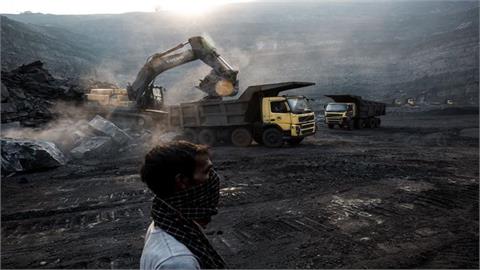Another sharp dive in oil prices may be nearer than you think, according to traders who see the market flashing warning signs that vital Oklahoma storage tanks will fill up even sooner than expected.
While benchmark U.S. crude oil futures still appear to be holding firm after trading at around $50 a barrel for the past month or so, the spread between first- and second-month oil futures collapsed last week, with prompt prices diving by more than $1 to their deepest discount in four years.
Shorthanded as "JK" in market jargon, U.S. West Texas Intermediate for April delivery (known as "J") were $2.38 a barrel cheaper than those for May ("K") on Friday, a gap that likely signals the early onset of another milestone in the great oil supply glut, running out of space in Cushing, Oklahoma, delivery point for the New York Mercantile Exchange contract.
"We feel that we may break the $44 level, we might even see a $3 handle," said Tariq Zahir, an analyst at Tyche Capital Advisors. "Maybe not next week, but Cushing continues to fill massively."
That the gap appeared so abruptly last week suggests scrambling by investors caught off-guard by the speed with which crude is likely to reach tank-tops in Cushing, which has been absorbing as much as half of the global oil supply surplus, according to Standard Chartered.
Two factors likely set off the slump: signs of distress in the Cushing cash market after the expiry of March futures, and news of an unexpected outage at a BP refinery in Indiana. As a result, some traders now worry that space could run out before end-March, weeks earlier than expected.
"Cushing is filling faster than we had expected back in January," said Michael Cohen, head of energy commodities research at Barclays. A wider spread is necessary to "incentivize storage" at locations beyond Cushing, where it tends to be less profitable or riskier to store excess oil.
SPREAD SURPRISE
Volatility in oil spreads is not unusual, but is normally reserved for the days prior to expiration of a futures contract, as traders scramble to close or roll over their positions before being forced to make or take physical delivery.
Last week, however, the volatility appeared after the Feb. 20 expiration of March futures, which had been trading at a discount of only 70 cents to April a day earlier.
The first signs of trouble appeared in what's known as the "roll" period for over-the-counter physical crude in Cushing, the three days following a future contract's expiration during which traders and refiners square up final positions.
While stockpiles in Cushing have risen for 18 of the past 20 weeks, the flows have quickened over that time. In the four weeks to Feb. 22, inventories rose by nearly 10 million barrels; in December, they rose by around 7 million. They now stand at 48.7 million barrels, while analysts and traders estimate operable capacity at 60 million to 72 million barrels.
Fearing it will grow increasingly difficult to find space to store physical crude, traders raced last week to dump their March barrels in the cash roll for as little as minus-95 cents, the lowest level since 2011.
The slide was exacerbated by news of an unexpected shutdown at a 110,000 barrel-per-day (bpd) crude unit at BP's Whiting, Indiana, refinery. Crude that may have been consumed there now threatens to get pumped down to Cushing, they reckon. The length of the outage is unclear, although industry sources told Reuters last week repairs were likely to take "a few days."
The blowout could have big implications for hedge funds and investors involved in exchange-traded funds like the U.S. Oil Fund, which must roll their positions in oil futures forward every month.
Due to the big gap in spreads, known as contango, investors would lose as much as $2.40 a barrel as they sell April futures and buy May. The lack of storage options in Cushing has cut the number of willing buyers, dealers say.
"It has to roll and if there is no bid for the front, things will get very expensive," said one trader.
Others suggest the dramatic gap in the April/May spread may have been caused by the USO fund, which has grown so large that some traders may be seeking to profit by getting in front of it. Its net assets have nearly quadrupled since September to $2.4 billion, while oil prices have fallen, leaving it holding as much as a tenth of the front-month futures contract.
A CUSHION FOR CUSHING?
To be sure, there is plenty of storage capacity available along the U.S. Gulf Coast, although it tends to be more costly and less attractive than Cushing, and it's possible that seasonal dynamics will cushion any downside in prices.
U.S. refineries will begin emerging from spring maintenance in March and April, raising crude demand, while May opens the start of the U.S. driving season, boosting product demand. Oil firms have also slammed the brakes on shale drilling, which is expected to halt output growth by mid-year.
But as traders know, timing is everything, and it's unclear whether fundamentals will change quickly or significantly enough to prevent another lurch lower.
"What happens to a barrel of crude oil if no one wants it and no one can even store it?" asked Walter Zimmerman, chief technical strategist for United-ICAP. "How do you even value that crude?"
(Reuters)



